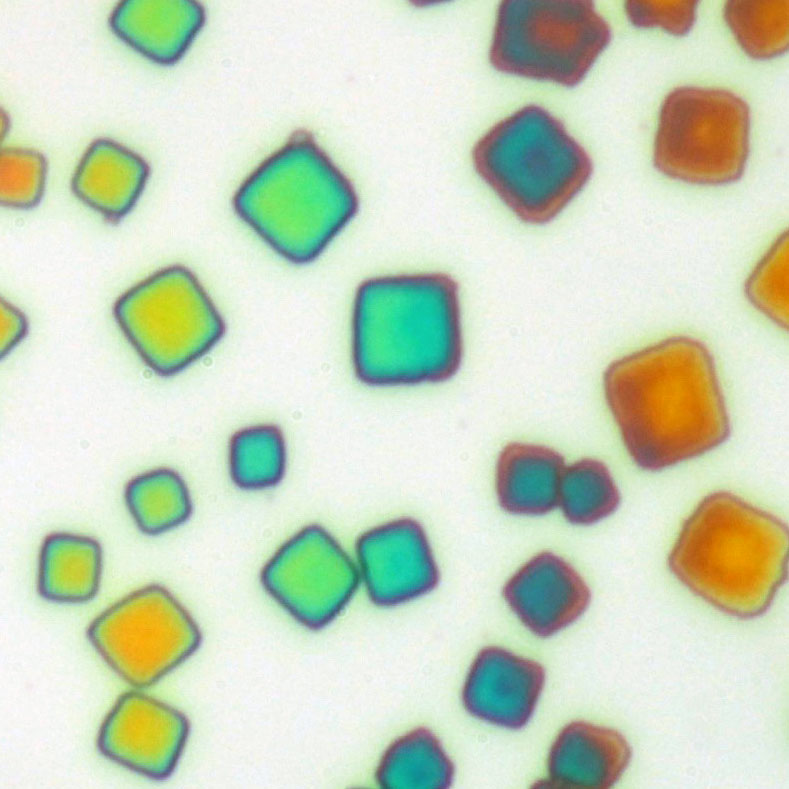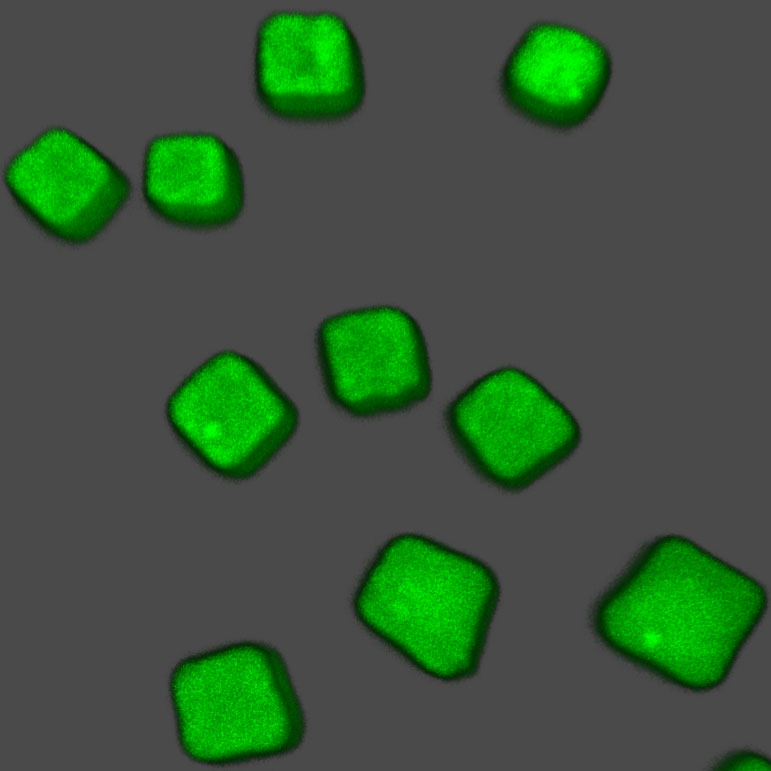Quantum light from superlattices
- LAC
- Highlights
Prof. Maksym V. Kovalenko and his team demonstrated how quantum dots can be arranged into superlattices. These superlattices emit superfluorescent light which can be used in future quantum applications.
Quantum dots (QDs) are bright, luminescent nanoparticles that can emit light in very well-defined colors, that can be changed by altering particle size. QDs are used, for example, in the latest generation of LCD televisions for achieving more vivid colors. Prof. Maksym V. Kovalenko and his team work on the next-generation of QDs, made of semiconducting perovskites, and arrange these QDs into superlattices, three-dimensional blocks of nearly identical quantum dots. They have now demonstrated a new property of such superlattices – emission of superfluorescent light. As a result, these superlattices can be used as quantum light sources for future quantum applications.
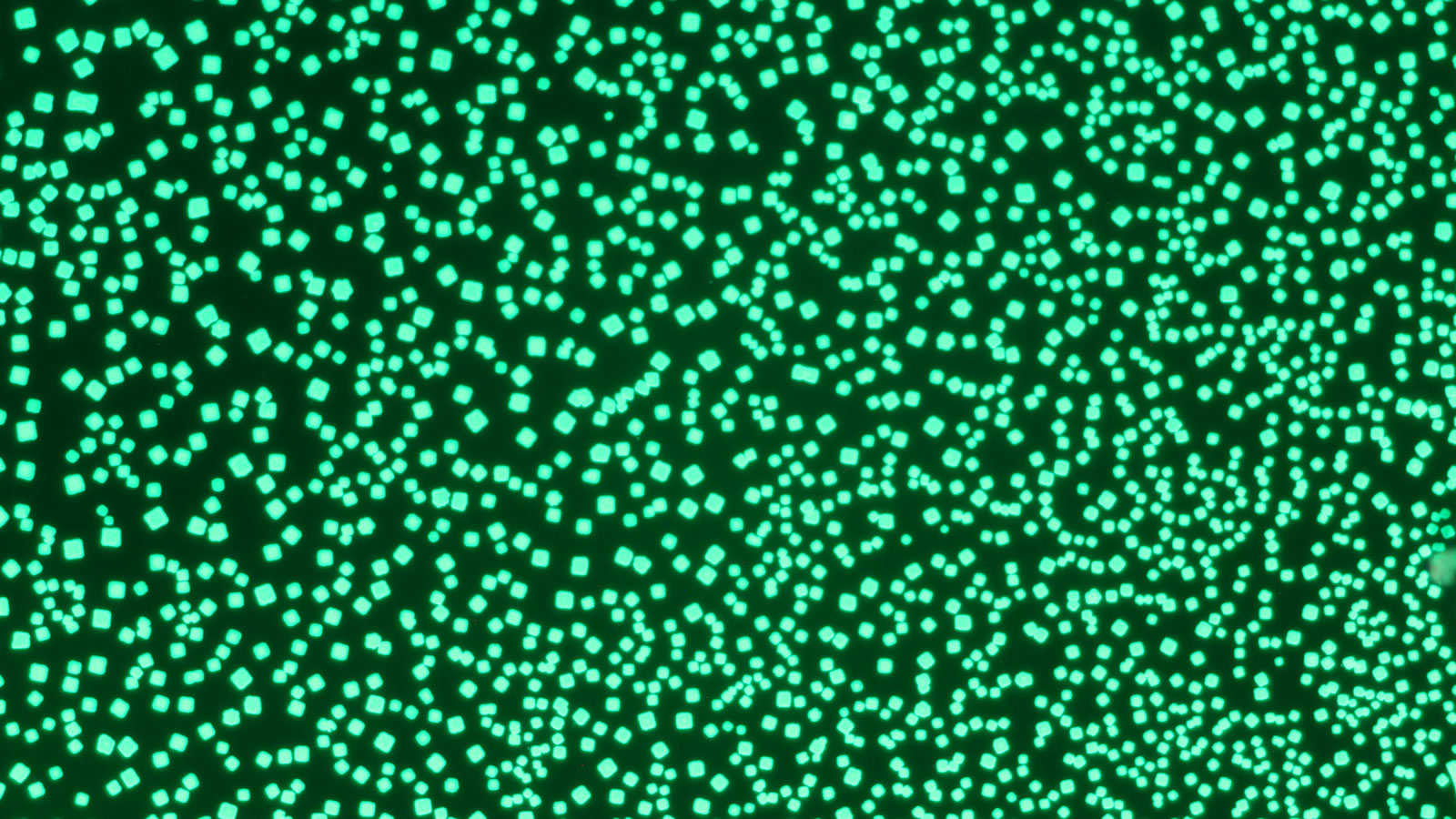
Superfluorescence from perovskite quantum dot superlattices
In the group of Prof. Kovalenko, perovskite-type QDs and their optoelectrical properties have been thoroughly investigated during the last years. This type of QD consists of cesium lead halide (CsPbX3, X = Cl, Br, I). In an article published in Nature at the beginning of this year, the international consortium of researchers could show that individual perovskite nanocrystals can rapidly emit extremely bright light – a process that occurs faster than in any other type of QD. This property makes perovskite QDs very interesting for use in optical data communication, e.g. in supercomputer networks, where every nanosecond counts. Now, researchers from ETH and Empa (M. Bodnarchuk, G. Rainò, M.V. Kovalenko), in collaboration with colleagues from IBM Research – Zurich (M. A. Becker, T. Stöferle, R.F. Mahrt), have discovered yet another intriguing property of these nanocrystals: in contrast to a random ensemble of fluorescent QDs, which emit uncorrelated photons after some delay, superlattices of the same QDs can emit bursts of correlated photons almost instantaneously, i.e. they are superfluorescent. Once excited, all dipoles inside the superlattice self-synchronize before returning to the ground state, thereby emitting all photons simultaneously in a burst only a few picoseconds after excitation. Such fast emission of light by QDs has never been reported before. These newly discovered superlattices are therefore particularly interesting as quantum light sources, which could be used e.g. in quantum communication or in quantum sensing applications.
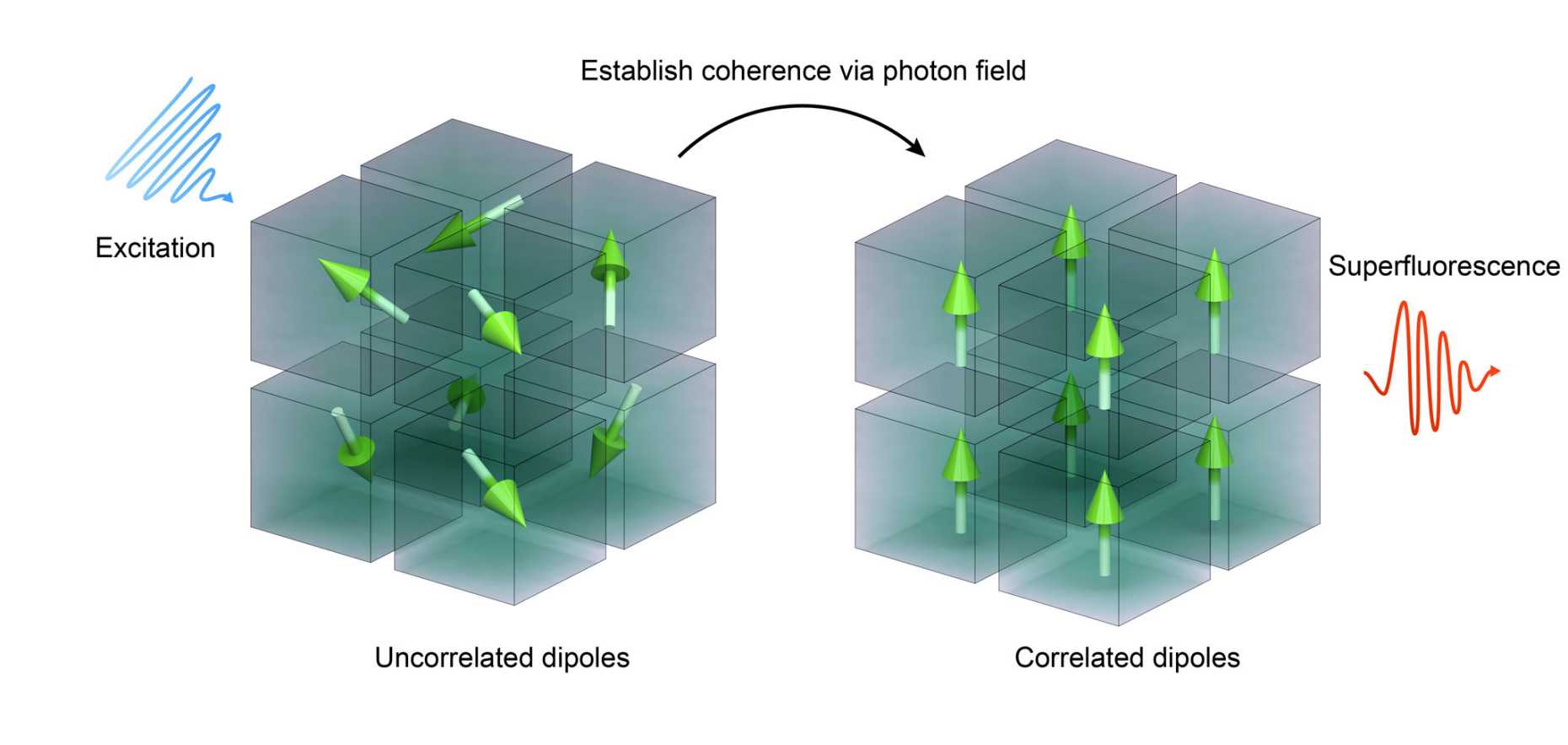
Perovskite quantum dots and their assembly into superfluorescent superlattices
To produce the superlattices, the researchers use a dispersion of cubic CsPbX3 perovskite nanocrystals, almost all of which have the exact edge length of 9.5 nm. By letting the solvent slowly evaporate, cube-shaped superlattices are formed spontaneously, each consisting of up to several million nanocubes. The fluorescent superlattices are visible under a microscope and have an edge length of up to 20 µm. “Such long-range ordered superlattices could only be obtained from a highly monodisperse solution of QDs, whose synthesis has been carefully optimized over the last few years” says Dr. Maryna Bodnarchuk, a senior scientist at Empa Dübendorf, making these QDs.
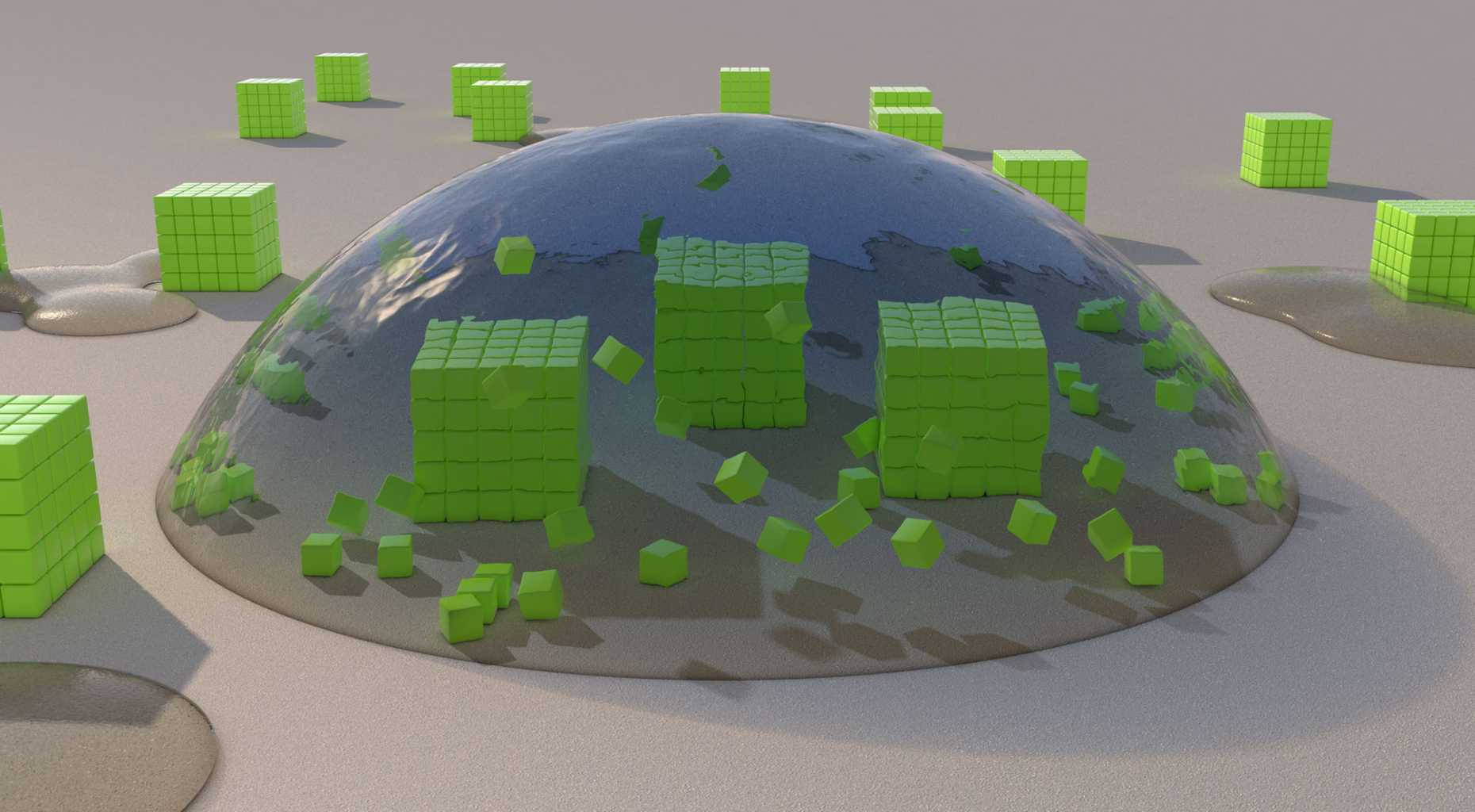
A breakthrough for quantum applications
"The possibility of producing highly correlated photons in such a simple way opens up new and exciting possibilities for fundamental research, and enables future developments in quantum technology. These newly discovered quantum light sources could become very important for quantum computing, quantum-encrypted communication, or quantum sensors with unprecedented accuracy.” says Dr. Gabriele Rainò, senior scientist in Prof. Kovalenko's group.
Reference
Gabriele Rainò, Michael A. Becker, Maryna I. Bodnarchuk, Rainer F. Mahrt, Maksym V. Kovalenko, and Thilo Stöferle: Superfluorescence from Lead Halide Perovskite Quantum Dot Superlattices.
Nature 2018, doi: external page10.1038/s41586-018-0683-0call_made

